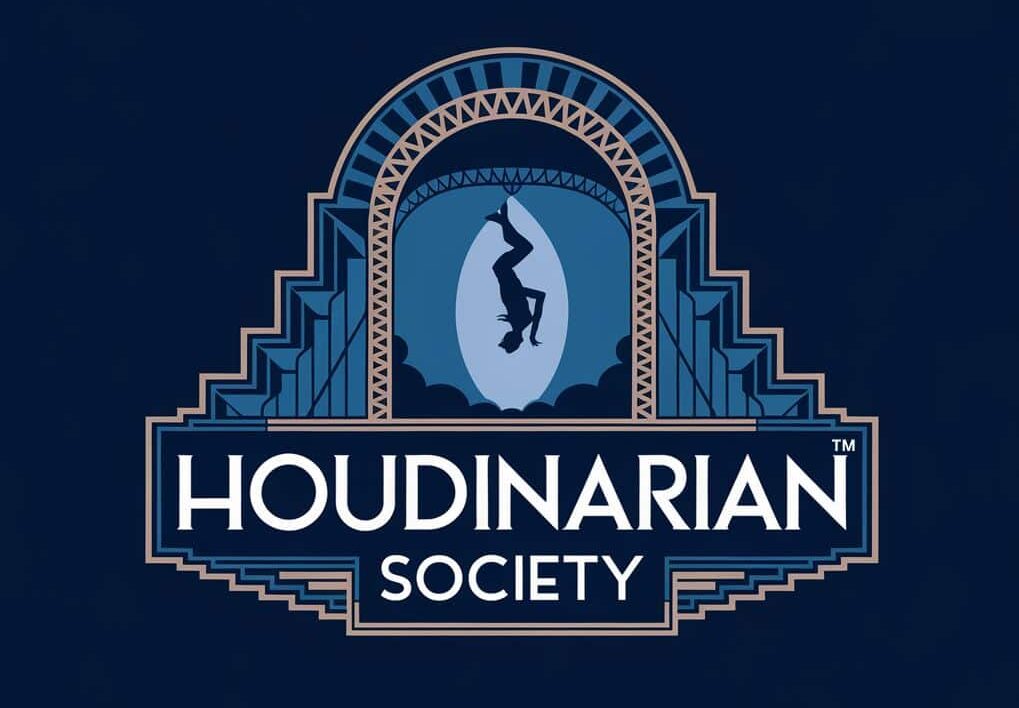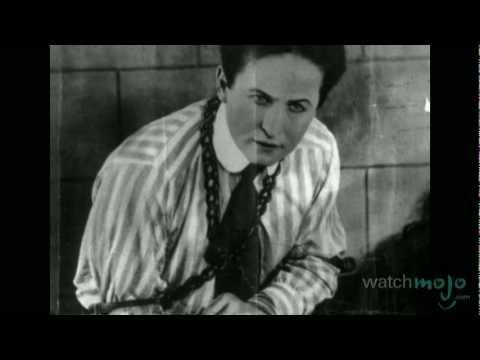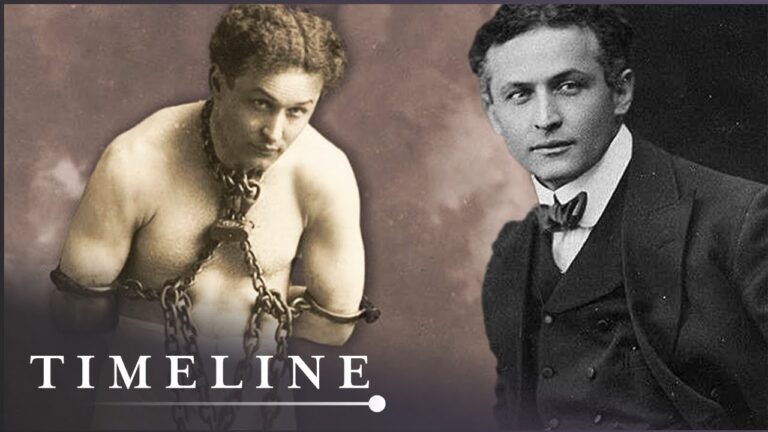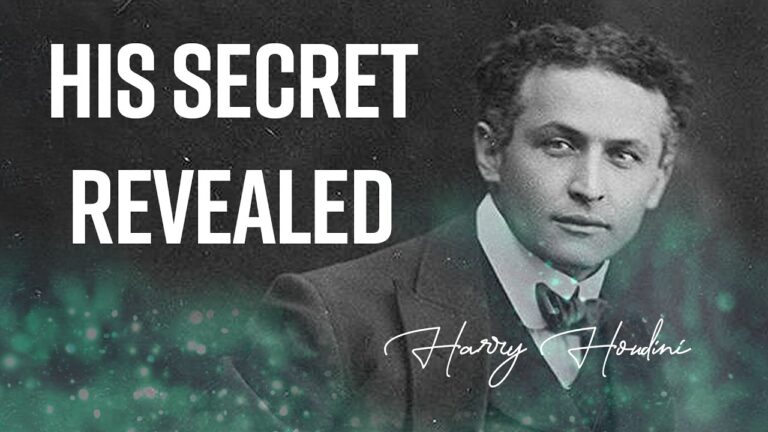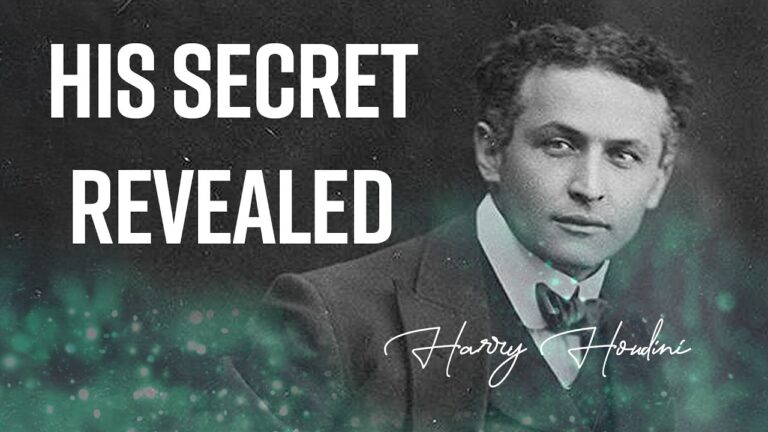The Cultural Significance of Houdini’s Magic: Reflections of Early 20th Century Society
Harry Houdini transformed entertainment in the early 1900s through his daring escapes and magic shows. His performances drew massive crowds who watched in amazement as he broke free from handcuffs, straitjackets, and water tanks.
His incredible stunts and theatrical showmanship captured the public’s imagination and reflected America’s growing fascination with spectacle and celebrity at the dawn of the twentieth century.
Behind the glitz and glamour, Houdini represented the classic immigrant success story. You might see parallels between his rise to fame and the dreams of millions who came to America seeking better lives.
Like many others, he worked his way up from poverty to become one of the most famous performers in the world.
In the 1920s, Houdini took on a new role as a debunker of fraudulent spiritualists. You can see how his campaign against fake mediums showed a society grappling with science, religion, and the boundaries between entertainment and deception.
His dedication to exposing truth while maintaining the mystery of his own illusions made him a complex cultural figure whose influence extends far beyond magic.
Houdini’s Magic as a Mirror of American Social Values

Magic acts in early 20th century America revealed deep cultural values and societal shifts. Your views of Houdini’s performances changed based on your place in society and personal struggles.
Escape Acts as Metaphors for Immigrant Aspirations
Harry Houdini’s background as a Hungarian immigrant shaped his most famous escapes. When you watched him break free from handcuffs and prison cells, you saw your own dreams of breaking free from social constraints.
His escape from the Chinese Water Torture Cell spoke directly to immigrant families. The act showed how you could overcome seemingly impossible barriers through determination and skill.
The public connected deeply with his stage name choice – transforming from Erik Weisz to Harry Houdini represented the Americanization many immigrants pursued.
Industrial Anxieties Reflected in Houdini’s Performances
The industrial age brought new fears about machinery and confinement. Your anxiety about factory work and urban crowding found expression in Houdini’s acts.
When you saw him escape milk cans and packing crates, it eased your fears about industrial accidents. His mastery over chains and locks showed humans could still triumph over machines.
His outdoor performances often involved breaking free from straitjackets while suspended from skyscrapers. These acts directly addressed your concerns about being trapped in the modern urban landscape.
Women’s Liberation Movements and Houdini’s Acts
Female audience members saw their own struggles for freedom reflected in Houdini’s escapes. His death-defying stunts particularly resonated with the growing women’s rights movement.
Breaking free from locked trunks underwater paralleled your fight against social restrictions. When his wife Bess participated in acts, it challenged ideas about women’s capabilities.
Your perspective as a woman in 1920s America gave special meaning to his escapes from binding ropes and chains. These props symbolized the social constraints you faced in daily life.
Challenges to Authority and Exposure of Fraudulent Mediums

The early 1920s marked a turning point in the public’s relationship with supernatural claims. Magic and spiritualism collided as Houdini launched his campaign against fraudulent mediums.
Houdini’s Battles Against Spiritualism and Mediums
You might be surprised to learn that Houdini initially hoped to contact his deceased mother through séances. His experiences led him to discover widespread deception in the spiritualist movement.
He dedicated significant time to exposing false mediums and their tricks. His methods included attending séances in disguise and demonstrating how mediums created their illusions.
Houdini’s crusade gained momentum when he testified before Congress in 1926. He pushed for stricter regulations on fortune-telling and mediumship practices in Washington, D.C.
Public Reactions to Houdini’s Exposures
Many spiritualists felt threatened by Houdini’s demonstrations. His efforts earned him numerous enemies, including his former friend Sir Arthur Conan Doyle.
Newspapers eagerly covered his exposures, drawing massive crowds to his lectures. People became more skeptical of supernatural claims, though some faithful spiritualists remained unconvinced.
His public demonstrations showed audiences how mediums used simple tricks:
- Hidden wires to move objects
- Secret knocks to create “spirit sounds”
- Dim lighting to conceal movements
The Impact on Public Perception of Authority
The spiritualist movement had established deep roots in American culture before Houdini’s interventions. His work encouraged people to question claims from authority figures.
You can trace modern skepticism movements back to Houdini’s influence. His methods taught people to look for natural explanations before accepting supernatural ones.
His legacy created lasting changes in how people view paranormal claims. The techniques he developed for exposing frauds are still used by skeptics today.
Public Spectacles and Cultural Tensions

Harry Houdini’s performances challenged social norms and sparked intense debates about faith, science, and entertainment in early 20th century America. His public demonstrations became battlegrounds where traditional values clashed with emerging modern sensibilities.
Tradition vs. Modernity in Houdini’s Public Performances
Houdini’s street performances disrupted quiet city life, drawing massive crowds that blocked traffic and tested police patience. You would often see him suspended from skyscrapers in a straitjacket, turning city architecture into his stage.
His ability to innovate transformed magic from small parlor tricks into grand public spectacles. These displays challenged Victorian era restraint and propriety.
The performer’s bold marketing tactics, like challenging local police to restrain him, broke traditional entertainment boundaries. His escapes from handcuffs and jail cells questioned authority in ways that resonated with working-class audiences.
The Role of Houdini’s Challenges in Shaping Public Discourse
Public disagreements with spiritualists defined Houdini’s later career. He exposed fraudulent mediums while championing scientific skepticism.
His widely publicized $10,000 challenge to psychics sparked heated debates in newspapers across America. You could find his name in headlines almost weekly, as he turned exposure of fake mediums into public entertainment.
These confrontations reflected deeper social tensions between scientific progress and religious faith. Each public challenge became a symbolic battle between old beliefs and modern skepticism.
Broader Cultural Implications of Houdini’s Stunts
The Jewish Museum’s exhibition highlighted how Houdini’s performances reflected immigrant success stories. His transformation from Erik Weisz to Harry Houdini embodied the American dream.
His escapes symbolized freedom from social constraints. When you watched Houdini break free from chains, you saw a metaphor for breaking class barriers and old-world restrictions.
His acts influenced popular culture beyond magic. Artists, filmmakers, and writers continue drawing inspiration from his dramatic performances that merged spectacle with social commentary.
The Revolution of Entertainment Marketing
Early 20th century entertainment marketing underwent a dramatic transformation through Harry Houdini’s groundbreaking promotional methods. His innovative techniques created the blueprint for modern celebrity self-promotion and entertainment publicity.
Houdini’s Publicity Techniques and Their Innovations
Houdini mastered the art of brand name power decades before it became standard marketing practice. He crafted public stunts that generated massive press coverage and drew huge crowds.
His signature move involved visiting local police stations in each new city. He would challenge officers to lock him in their cells, creating instant publicity and credibility for his shows.
Houdini understood the value of controversy. He famously exposed fake mediums and spiritualists, positioning himself as both an entertainer and a crusader for truth.
Influence on Modern Entertainment Marketing
You can see Houdini’s marketing DNA in today’s entertainment industry. His techniques of building anticipation through public demonstrations shaped how modern performers promote their work.
His innovative approach to personal branding created a template for celebrity image management. He carefully controlled his public image through photographs, interviews, and media appearances.
Houdini pioneered the practice of cross-promotion, linking his performances to newspaper challenges and public debates.
Case Studies of Houdini’s Most Successful Campaigns
The Milk Can Escape campaign of 1908 exemplified his marketing genius. Houdini advertised it as “The Failure Means a Drowning Death,” creating unprecedented media buzz.
His 1916 suspended straitjacket escapes drew record crowds. He performed these dangerous stunts above busy city streets, ensuring maximum visibility and newspaper coverage.
The Mirror Challenge of 1904 displayed his talent for creating interactive publicity. He offered cash rewards to any manufacturer whose handcuffs could hold him, generating weeks of free advertising and public interest.
